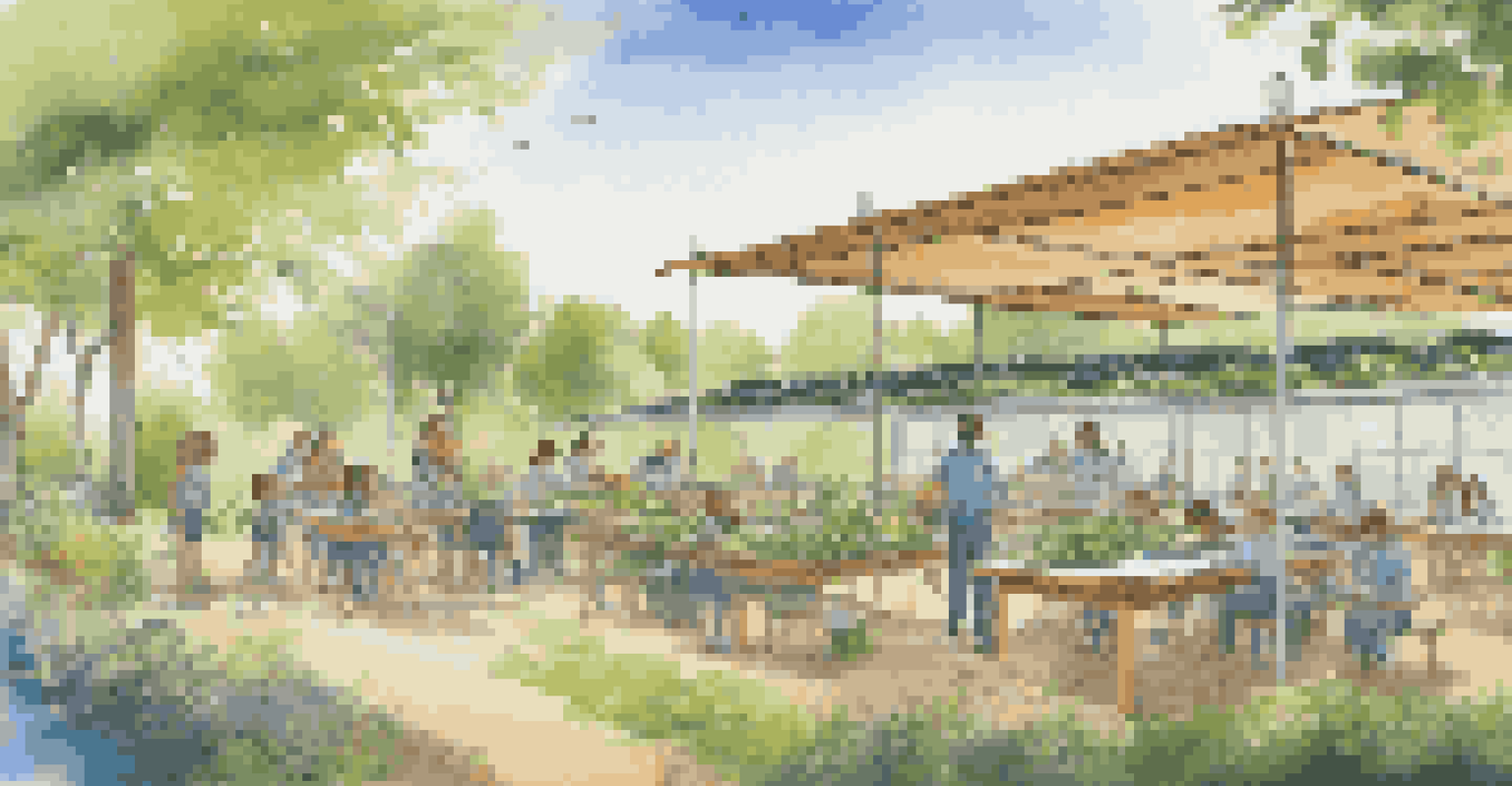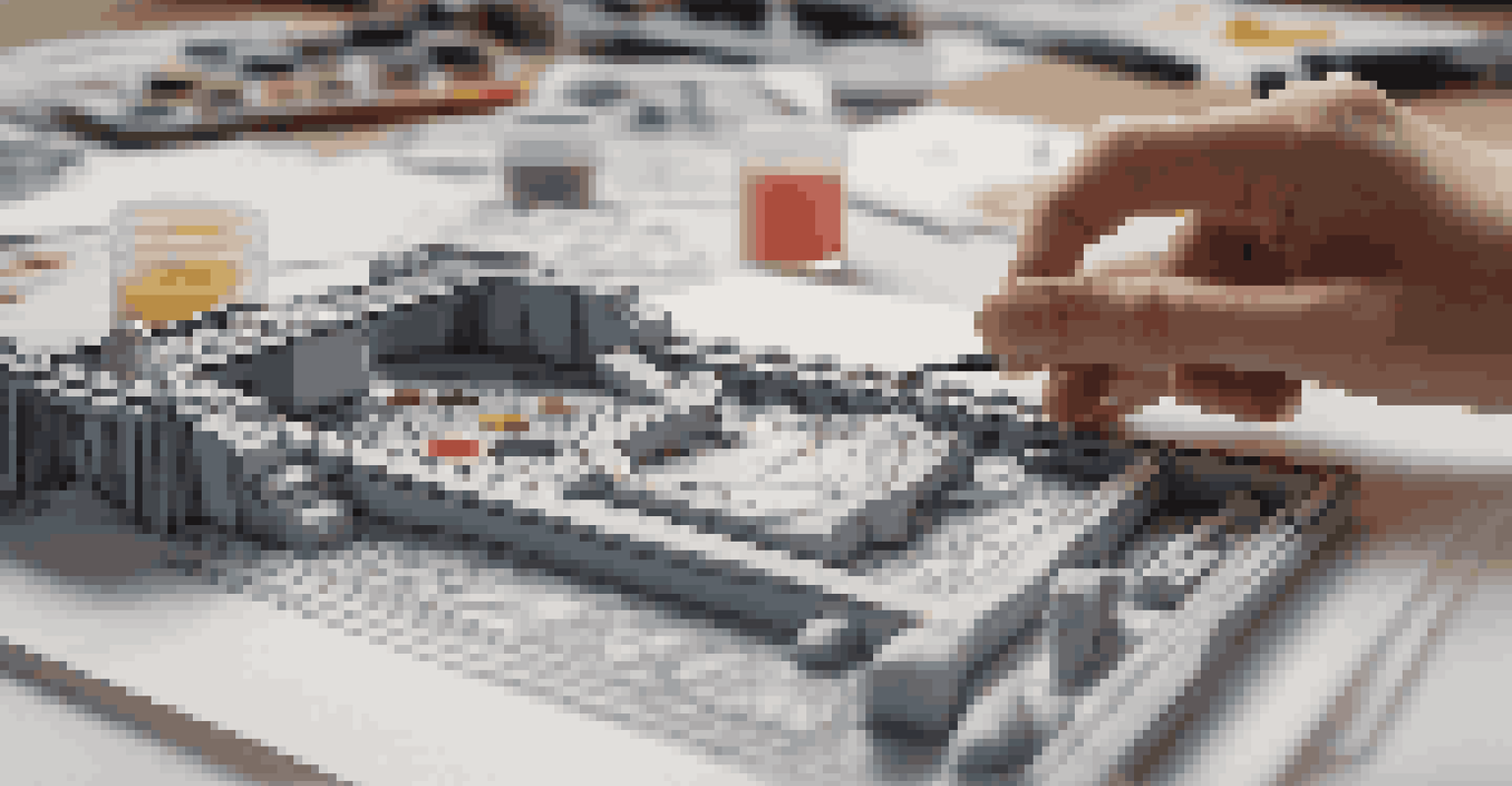Building Creative Confidence in Students Through STEAM Learning

Understanding the Importance of Creative Confidence
Creative confidence is essential for students as it empowers them to embrace innovation and think outside the box. When students believe in their creative abilities, they are more likely to take risks and explore new ideas, which is crucial in today’s rapidly changing world. This confidence not only enhances their academic performance but also prepares them for future challenges in their careers.
Creativity is intelligence having fun.
STEAM learning, which integrates Science, Technology, Engineering, Arts, and Mathematics, plays a pivotal role in nurturing this confidence. By incorporating artistic elements into traditional subjects, students can express themselves in diverse ways, fostering a deeper connection to the material. This holistic approach encourages students to view problems from multiple perspectives, enhancing their problem-solving skills.
Moreover, STEAM education cultivates an environment where trial and error is embraced rather than feared. When students are encouraged to experiment and iterate on their ideas, they learn that failure is a part of the creative process. This mindset shift is vital, as it allows them to build resilience and develop a lifelong love for learning.
The Role of Collaboration in STEAM Education
Collaboration is at the heart of effective STEAM learning. When students work together on projects, they share ideas, challenge each other's thinking, and learn from one another’s strengths. This collaborative spirit not only enhances creativity but also fosters a sense of community and belonging among students.

Group projects in STEAM settings often require students to combine their unique skills and perspectives, leading to innovative solutions. For example, a group tasked with building a model of a sustainable city might blend artistic design, engineering principles, and ecological science. This intersection of disciplines showcases the beauty of teamwork and the power of diverse ideas.
Creative Confidence Fuels Innovation
Creative confidence empowers students to embrace new ideas and tackle challenges, enhancing their academic and career prospects.
Additionally, collaboration encourages students to communicate their thoughts clearly and listen actively. These soft skills are invaluable, as they prepare students for future workplace environments where teamwork and effective communication are essential. By practicing collaboration in a creative context, students build confidence not just in their ideas, but in their ability to articulate and advocate for them.
Integrating Hands-On Learning Experiences
Hands-on learning experiences are crucial in building creative confidence in students. Engaging in practical activities allows students to apply theoretical knowledge in real-world scenarios, making learning more impactful and memorable. For instance, a science experiment that involves creating a chemical reaction not only teaches concepts but also ignites curiosity and excitement.
The only way to do great work is to love what you do.
In STEAM education, hands-on projects can range from coding a simple game to creating a piece of art using recycled materials. These activities encourage students to explore their creativity while developing technical skills. As they see their ideas come to life, their confidence grows, and they become more willing to tackle complex challenges.
Moreover, hands-on learning fosters a growth mindset. When students encounter obstacles during their projects, they learn to persevere and adapt their strategies. This resilience is a critical component of creative confidence, as it teaches them that creativity is not just about having ideas but also about refining and improving them.
Incorporating Technology to Enhance Creativity
Technology plays a vital role in STEAM education by providing students with tools to express their creativity. From graphic design software to coding platforms, technology opens up new avenues for students to explore their interests and bring their ideas to fruition. For example, using 3D printing technology allows students to design and create tangible objects, transforming their concepts into reality.
Furthermore, technology encourages students to experiment and iterate on their designs. Digital tools often come with features that enable easy modifications, allowing students to refine their work without starting from scratch. This flexibility promotes a creative flow, where students feel free to explore multiple iterations of their projects.
Collaboration Enhances Learning
Working together on projects fosters creativity, community, and essential communication skills among students.
Additionally, integrating technology into the curriculum prepares students for future careers where digital literacy is essential. By engaging with technology in a creative context, students not only build their confidence but also gain valuable skills that will serve them well in a technology-driven world.
Promoting a Safe Space for Creative Exploration
Creating a safe learning environment is fundamental in building creative confidence among students. When students feel safe to express their thoughts and ideas, they are more likely to take risks and explore new concepts. A classroom that fosters a culture of respect and support encourages students to share their unique perspectives without fear of judgment.
In STEAM education, promoting a safe space can be achieved through open discussions and constructive feedback. When students know that their contributions are valued, they are more inclined to participate actively in collaborative projects. This sense of belonging is crucial for their creative development, as it nurtures their willingness to share and experiment.
Moreover, educators play a pivotal role in establishing this environment. By modeling vulnerability and sharing their own creative processes, teachers can inspire students to embrace their individuality. When students see their educators navigating challenges and celebrating successes, they learn that creativity is a journey filled with ups and downs, ultimately fostering their confidence.
Connecting STEAM Learning to Real-World Applications
Linking STEAM concepts to real-world scenarios enhances students' understanding and relevance of what they are learning. When students see how their studies can be applied to solve everyday problems, their engagement and motivation increase significantly. For example, exploring renewable energy solutions can inspire students to think critically about environmental issues while applying engineering principles.
Real-world connections also allow students to understand the impact of their creativity beyond the classroom. When they engage in projects that address community needs, such as designing a garden or developing an app to assist local services, they recognize that their ideas can create tangible change. This realization boosts their confidence and reinforces the value of their contributions.
Real-World Connections Boost Engagement
Linking STEAM concepts to real-life applications increases student motivation and confidence in their ability to effect change.
Furthermore, real-world applications often involve collaboration with community members or professionals in related fields. These partnerships not only provide students with valuable insights but also showcase the importance of creative problem-solving in various careers. By bridging the gap between education and real life, students become more confident in their ability to contribute meaningfully to society.
Encouraging Continuous Learning and Growth
Encouraging a mindset of continuous learning is essential for fostering creative confidence in students. STEAM education thrives on curiosity and exploration, which are crucial for personal and academic growth. When students are motivated to seek out new knowledge and experiences, they become more adaptable and innovative thinkers.
By promoting lifelong learning habits, educators can instill a love for exploration in their students. Encouraging them to pursue interests outside of the classroom—like attending workshops or participating in extracurricular activities—can expand their creative horizons. These experiences reinforce the idea that creativity is not limited to a single subject but can flourish in various contexts.

Moreover, celebrating progress and milestones, no matter how small, cultivates an appreciation for the journey of learning. When students recognize their growth over time, they build a deeper sense of self-efficacy and resilience. This continuous loop of learning and growth is what ultimately solidifies their creative confidence, empowering them to tackle future challenges head-on.